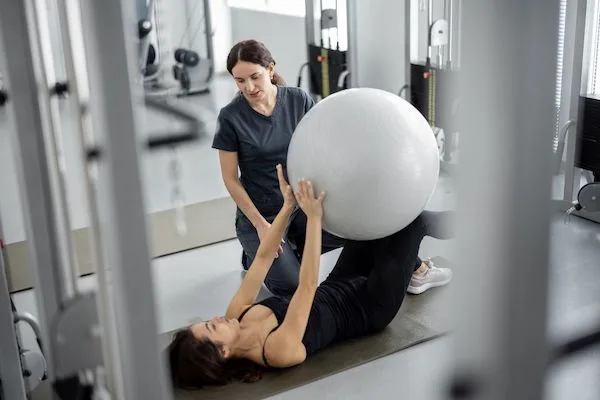Rehabilitation exercises are essential for recovering from various injuries and conditions, whether it involves recovering from surgery, managing chronic pain, or improving mobility after an injury. Physiotherapy clinics in Singapore play a pivotal role in guiding patients through these exercises, ensuring a structured and effective recovery process.
Initial Assessment and Preparation
Before embarking on any rehabilitation program, undergoing a thorough initial assessment at a physiotherapy clinic in Singapore is crucial. This assessment helps identify the specific injury or condition, assesses range of motion, strength, and flexibility, and establishes baseline measurements to track progress accurately. It also allows physiotherapists to tailor rehabilitation exercises based on individual needs, ensuring a personalised approach to recovery.
Lower Back Pain Rehabilitation Exercises
Lower back pain is a prevalent issue that can benefit significantly from targeted rehabilitation exercises. Starting with gentle stretches to improve flexibility and reduce muscle tension is key. For example, exercises like lying on your back and pulling one knee towards your chest can effectively stretch the lower back muscles. Progressing to exercises that strengthen core muscles, such as pelvic tilts and bridges, helps stabilise the spine and alleviate pressure on the lower back, contributing to long-term pain relief and prevention.
Shoulder Injury Rehabilitation Exercises
Shoulder injuries, including rotator cuff strains or frozen shoulders, require specific rehabilitation exercises to restore mobility and strength effectively. Beginning with pendulum exercises to gently move the shoulder joint and reduce stiffness sets a foundation for recovery. Advancing to exercises like shoulder blade squeezes and external rotation exercises using resistance bands strengthens the rotator cuff muscles and enhances shoulder stability, crucial for regaining a full range of motion and preventing future injuries.
Knee Injury Rehabilitation Exercises

Recovering from knee injuries, such as ligament tears or osteoarthritis, demands a focused approach to rehabilitation exercises aimed at strengthening the muscles surrounding the knee joint and improving flexibility. Initiating with quadriceps sets, where you tighten the thigh muscles and hold for a few seconds, is beneficial. Progressing to exercises like straight leg raises and mini-squats aids in improving knee stability and range of motion. Integrating sports massage sessions alongside these exercises helps alleviate muscle tension and promote faster recovery from knee injuries, enhancing overall rehabilitation outcomes.
Ankle Sprain Rehabilitation Exercises
Ankle sprains can benefit immensely from rehabilitation exercises designed to restore balance, strength, and flexibility in the affected joint. Beginning with ankle circles and toe stretches to enhance flexibility and reduce stiffness sets the stage for recovery. Advancing exercises such as calf raises and ankle dorsiflexion exercises using resistance bands strengthen the ankle muscles and improve stability, essential for preventing re-injury. Incorporating sports massage techniques into the rehabilitation regimen can further aid in reducing swelling, promoting circulation, and accelerating healing around the ankle joint.
Full Body Conditioning and Sports Massage Integration
As rehabilitation progresses, incorporating full-body conditioning exercises becomes crucial for enhancing overall strength, endurance, and functional movement patterns. Exercises such as plank variations, lunges, and functional movements like squats with overhead presses help improve muscle balance and coordination across multiple muscle groups. Regular sports massage sessions at a physiotherapy clinic in Singapore complement these exercises by reducing muscle tension, promoting circulation, and facilitating faster recovery from injuries, supporting comprehensive rehabilitation efforts.
Monitoring Progress and Adjusting Exercises
Throughout the rehabilitation journey, ongoing monitoring of progress and adjustments to exercises are essential for optimising recovery outcomes. Physiotherapists at Singapore physiotherapy clinics provide expert guidance on proper exercise techniques, gradual progression of exercises based on individual capabilities, and modifications as necessary to ensure safe and effective rehabilitation. This personalised approach ensures that rehabilitation goals are met effectively and safely, empowering individuals to regain optimal physical health and function.
Conclusion
Step-by-step rehabilitation exercises tailored to different injuries and conditions are crucial for promoting recovery, restoring function, and preventing future injuries. By following a structured rehabilitation program under the guidance of physiotherapy clinics in Singapore and incorporating sports massage therapy, individuals can accelerate their recovery journey and regain optimal physical health effectively and safely.
Contact ProRehab today for more information.






